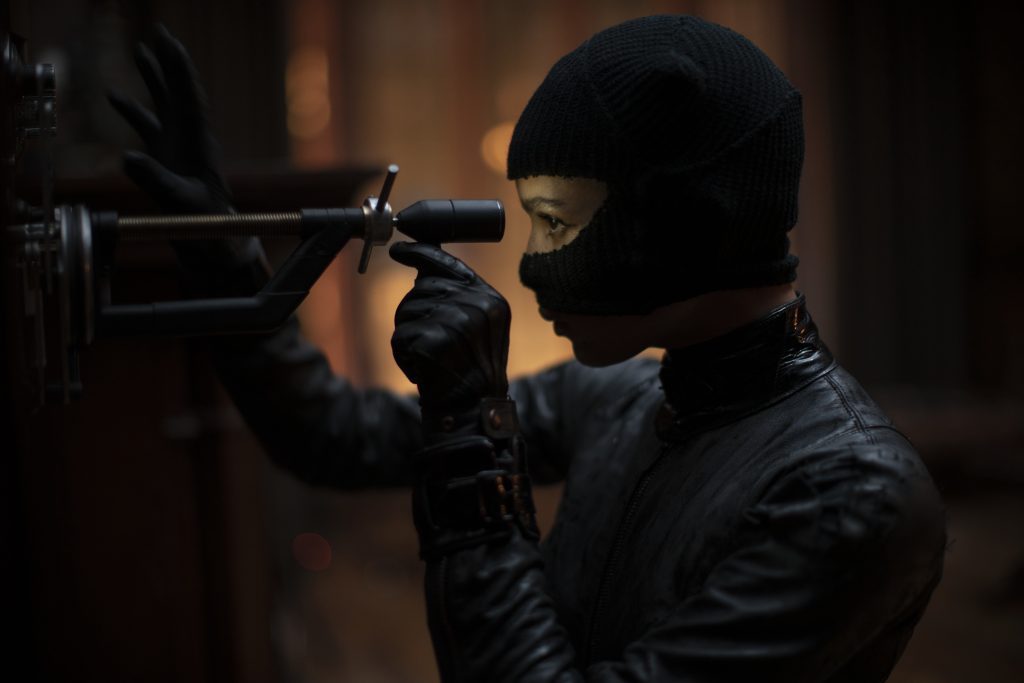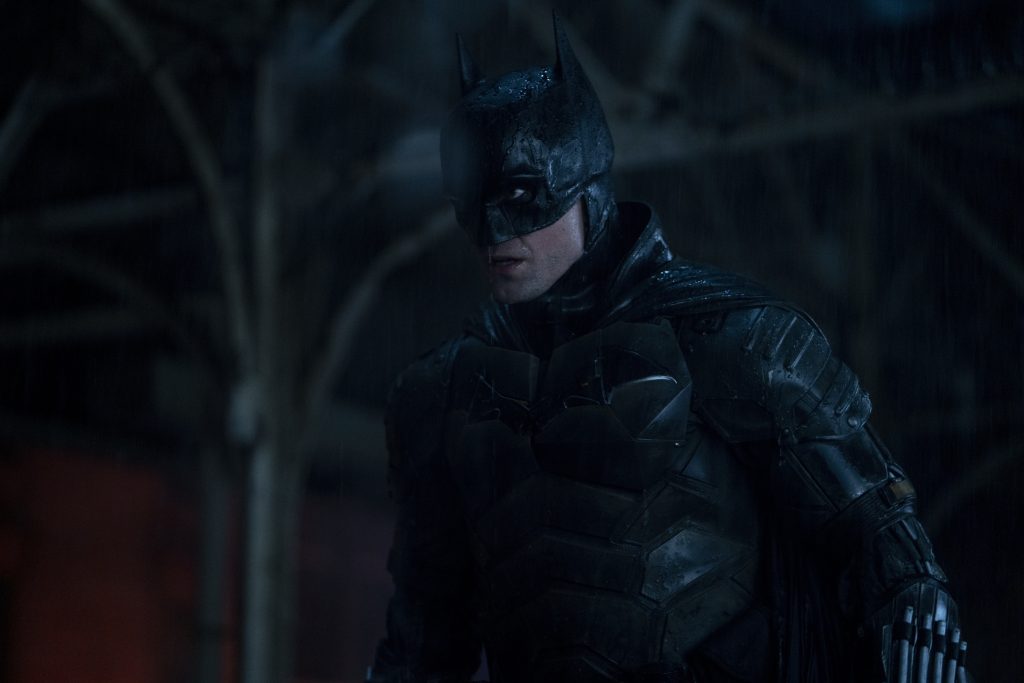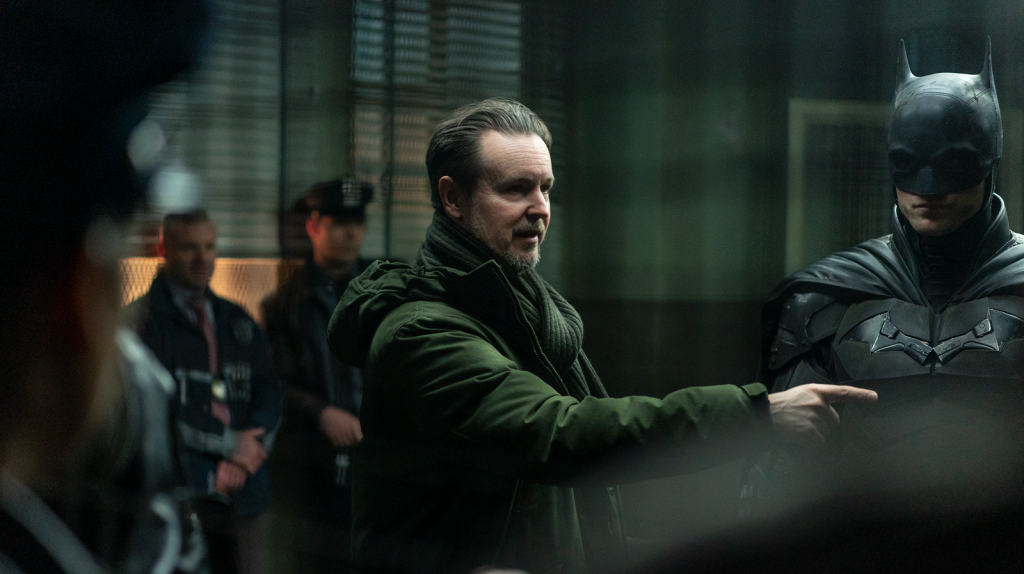Matt Reeves’ upcoming The Batman is the most hotly anticipated film of the year, a psychological noir, anti-origin story take on the character both familiar and like we’ve never seen before.
It’s also a Batman informed heavily by the world in 2022, stripped of its period piece frozen-in-40s New York trappings and influenced by many real-life figures—including one major politician.
Jeffrey Wright, the Tony, Golden Globe and Emmy-winning actor best known for his contributions to the James Bond franchise as Felix Leiter and starring as Bernard Lowe in Westworld, plays Commissioner Jim Gordon in the film, a part previously played by Gary Oldman in Christopher Nolan’s Dark Knight trilogy and JK Simmons in Batman v. Superman: Dawn of Justice.
Wright, however, didn’t base his Jim Gordon on any previous performance—he based him on current New York City mayor Eric Adams.
“One of the references I had for Gordon was Eric Adams, who was a very prominent member of the New York City police department that I was aware of in the 90s during the Amadou Diallo and Abner Louima cases because he was a part of an organization called 100 Blacks in Law Enforcement Who Care. Eric Adams was president and he was very outspoken,” Wright tells Esquire Middle East.
“For me, he was a reference. Who is this Gordon in a contemporary Gotham? Who might he reflect? I looked at Eric, and of course now Eric is Mayor of New York City,” Wright continues.
Read our full conversation below:
Commissioner Gordon has been played by a number of terrific actors over the years. What defines your Jim Gordon?
What differentiates what I do is the same as what differentiated any other actor who played Gordon before—I worked with an ensemble, and I worked under the vision of a director, in this case, Matt Reeves, and alongside Rob Pattinson. These were the primary drivers that informed the choices that I made, the tone that we tried to set together. It’s specific to this Gotham that we’ve built together.
Of course, based on Matt’s script, which was a very specific, narrative driven, mystery driven, film noir-based story. The bells and whistles were all handmade—the Batmobile, for example. That was really informed my understanding of what he was trying to achieve—something that was palpable, that was accessible, , that reflected the world that exists outside the window in contemporary New York City.
it was the specifics of the collaborators that I was working with, and the environment that we were trying to create together. The lighting and the use of shadow that Greig Fraser brought to the table and James Chinlund production design also informed us. It’s all of us together that separates any one individual apart from the individual work of anyone who came before.

How does this version of Jim Gordon intentionally reflect the world we live in?
In broad brush terms, Matt and I would talk about these things on that front. One of the primary themes within this film is trust. Can the cops be trusted? Can the politicians be trusted? We did discuss current paradigms, but only to the extent that it informed the story that we were telling.
We did talk about Gordon being a cop who still had work to do in the streets, and the ways in which that would inform his relationship to Batman, in that they were very much a team, working at the underbelly of things.
I think Matt, when he asked me to be a part of this, had in mind that he wanted to create a contemporary version of New York City, a major American city police department that was inhabited by people that inhabit contemporary departments in a major American city.

When when Batman was created, Bill Finger and Bob Kane were living in the Bronx in 1939. New York City was a very different city than in 2022 New York City. This is what they base Gotham on–it’s inhabited by a much wider variety of people now than it was then, and those people occupy all levels of society, both in the police department, politically, and otherwise. I think that’s what Matt had in mind when he when he asked me to do this.
What did you pull from in reality, specifically?
One of the references I had for Gordon was Eric Adams, who was a very prominent member of the New York City police department that I was aware of in the 90s during the Amadou Diallo and Abner Louima cases because he was a part of an organization called 100 Black Men in Law Enforcement. Eric Adams was president and he was very outspoken.
For me, he was a reference. Who is this Gordon in a contemporary Gotham? Who might he reflect? I looked at Eric, and of course now Eric is Mayor of New York City.
How do you feel that informs the work?
I think our film in some ways reflects the changing times, the changing demographic of a fictional American city that is called Gotham. I think in doing that, it takes this series off the museum shelf and puts it in real life in a way that’s necessary.

We talked about these things with a broad brush, as I described, and only in specific ways as they related to the story that we were telling. But yeah, the resonances are that are there.
What else is in this Gotham that brings something new to the franchise?
In Matt’s Gotham, the tendrils of class are evident in a way that we haven’t seen before. We see the interstitial tissue of class; we see the tensions there. There are assumptions that other films made that he didn’t make, dynamics that Matt exposes and allows us to live in the storytelling more vividly because we didn’t take things for granted. And that directly informs the relationship between Gordon and Batman.
What else struck you about it from an aesthetic point of view?
Aesthetically, this Gotham is a really interesting one. You’ve seen the trailer, so you’ve seen that skyscraper scene overlooking the city. We played on that set quite a bit, and I would just marvel at it because it’s a view of the East River from Manhattan looking East toward Brooklyn, toward my neighborhood. But what was done was, there were rooftops and facades that were borrowed from Gothic architecture, maybe a piece I think from Budapest is placed in the frame here. And maybe it is another piece from Chicago that’s slotted in, and so the skyline is recreated in a way that I haven’t seen before.

There are high level of talents that came together around this piece, with fairly sizable substantial resources behind them to pull it off. the evidence of all of that is there in the frame. So, yeah, it was it was a good, good place to work. It was a place that allowed for a lot of work for me in terms of visualizing who and where I was.
The Batman is in cinemas March 3 across the Middle East
